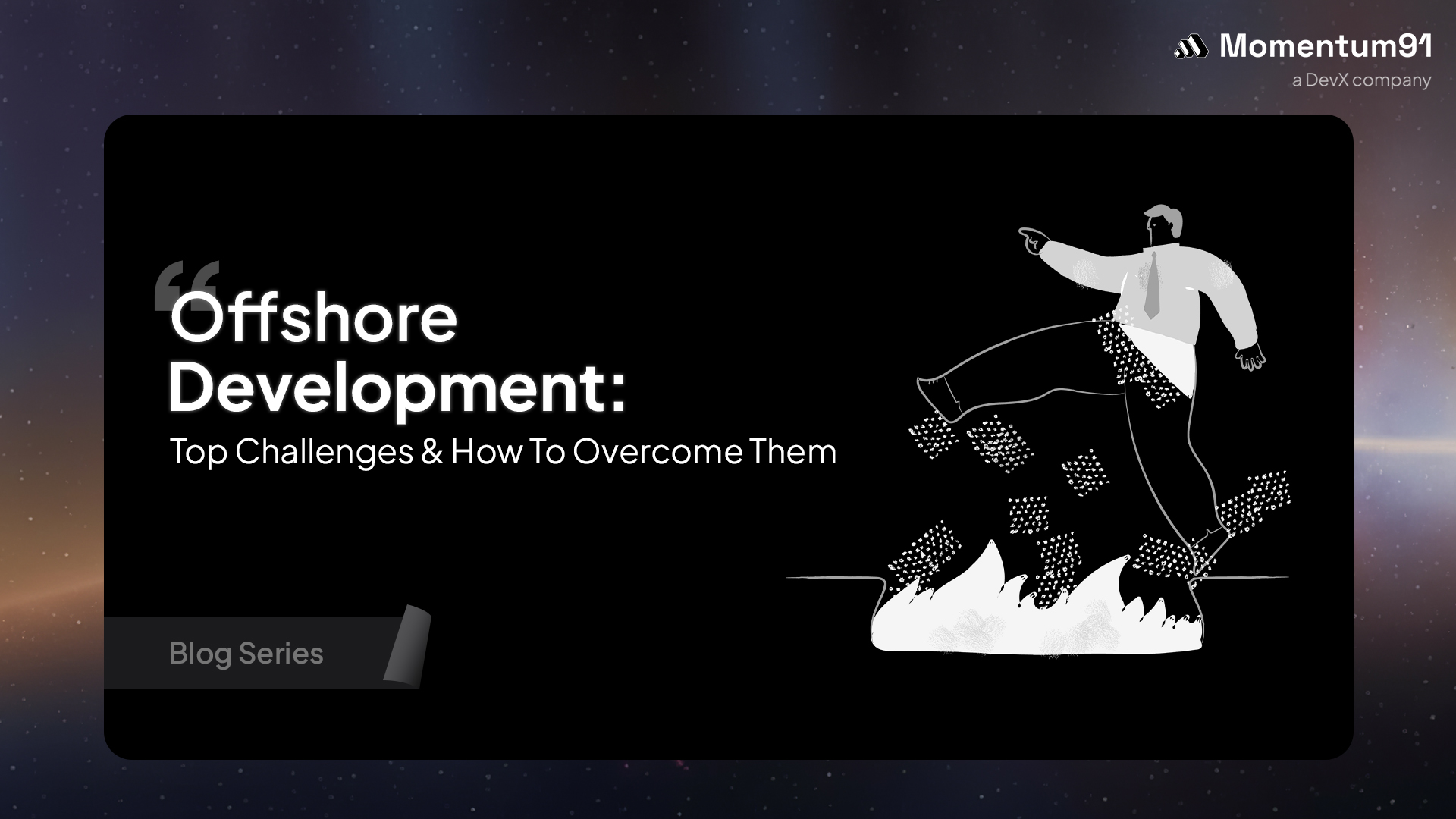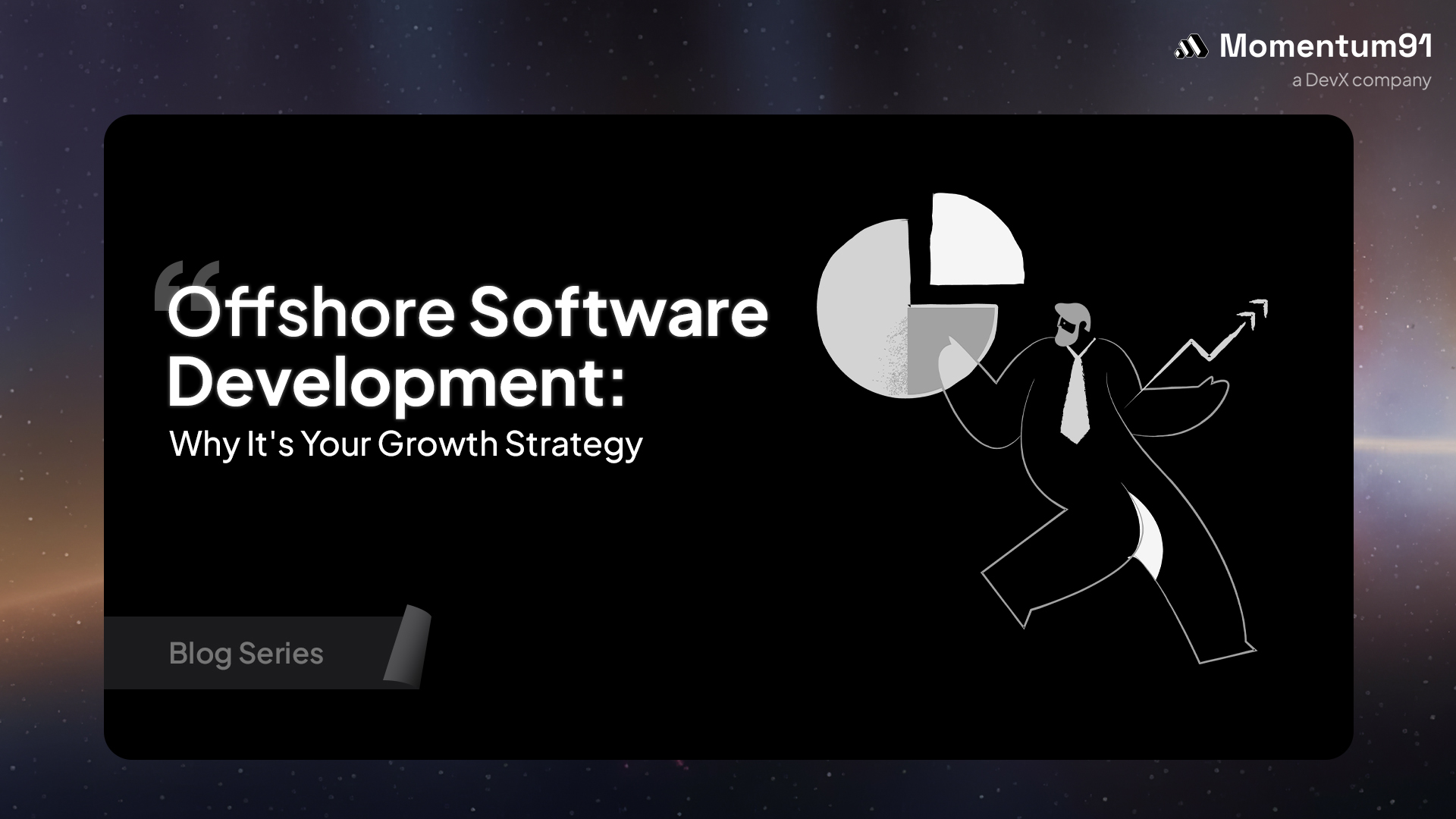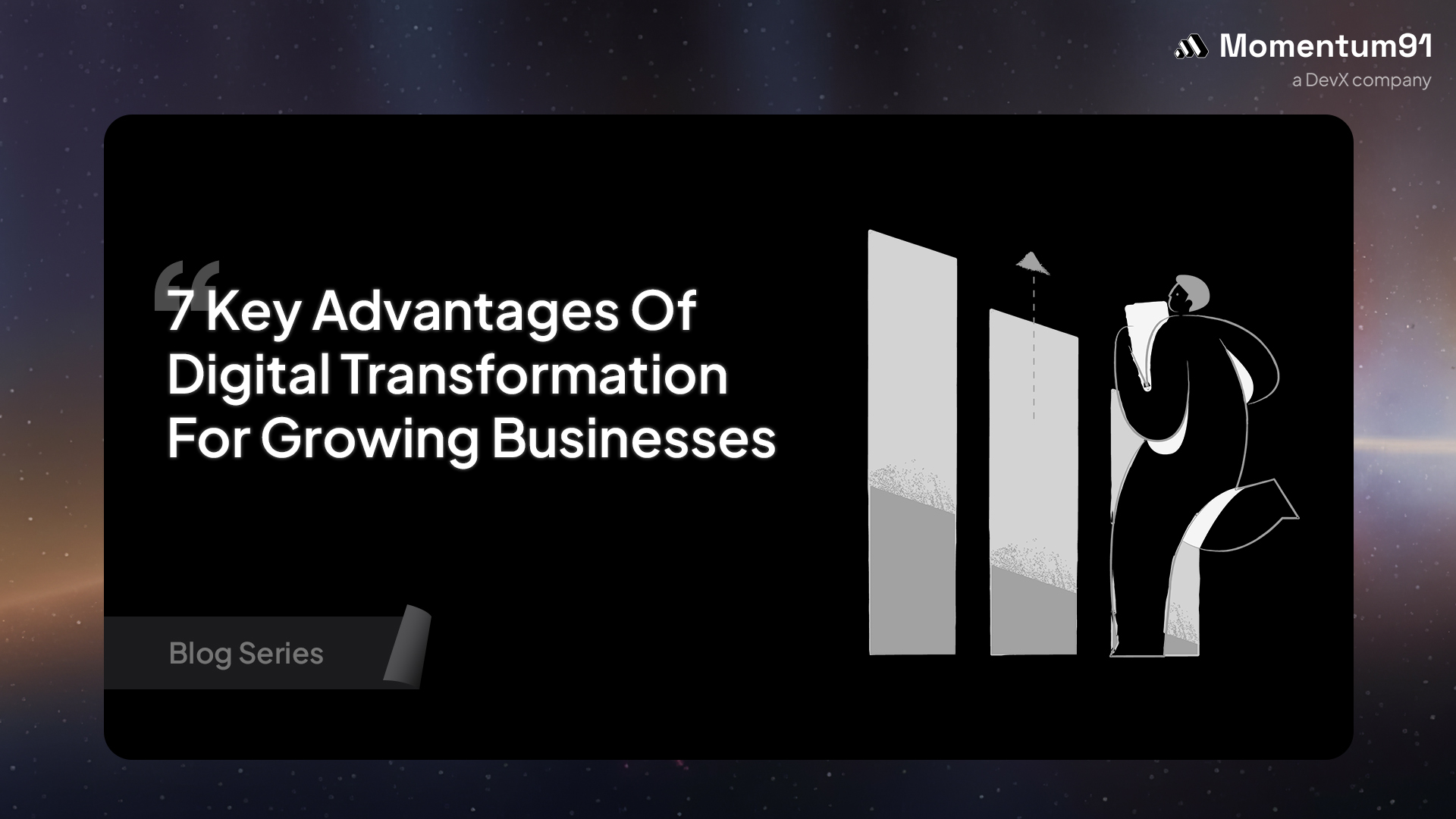Top Offshore Software Development Trends to Watch in 2025
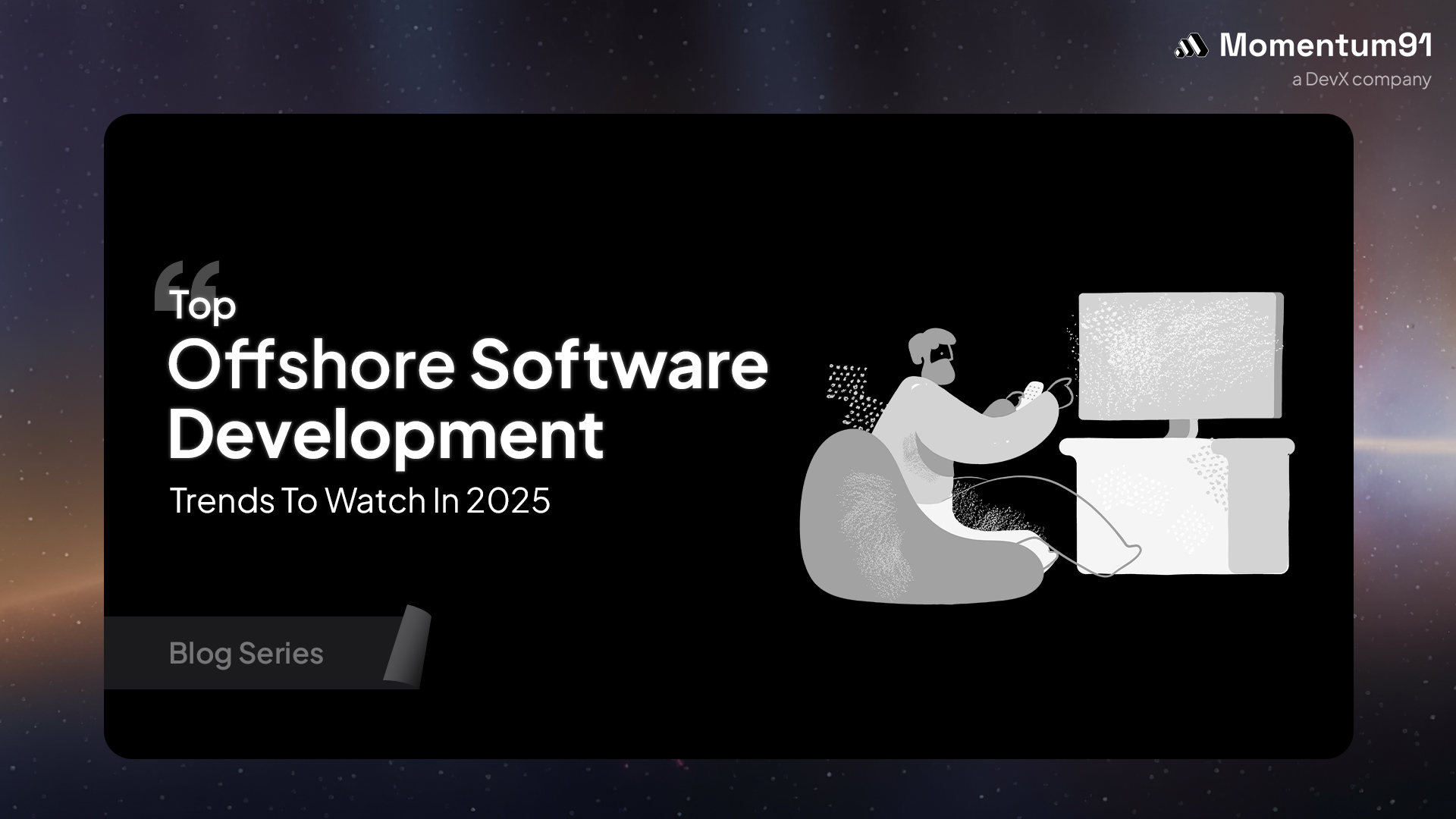
Businesses are rethinking their outsourcing strategies as offshore software development trends are reshaping how projects get delivered in 2025. AI-led coding, platform engineering, and SBOM security are moving from pilot programs to industry standards.
Cloud adoption continues to dominate, while hybrid delivery models improve speed and resilience. Data privacy, cybersecurity, and talent specialization are now key elements for every deal.
The latest offshore software trends show a shift toward outcome-based pricing, quality-first metrics, and unified observability across the SDLC. To help teams stay ahead, Momentum91 brings its proven global expertise and rapid deployment approach to deliver consistent, measurable results.
1. AI-Powered Development Teams Drive Latest Offshore Software Trends
AI is transforming how companies use offshore software development trends to ship faster and reduce risk. The biggest driver in 2025 is the rise of AI in offshore development with copilots that write, review, and optimize code automatically and simultaneously.
A) Machine Learning Integration in Code Generation
Machine learning offshore teams use trained models to generate boilerplate, recommend refactors, and cut coding effort by nearly 50%. This makes the latest offshore software trends a practical way to deliver the project early without hitting deadlines and without sacrificing quality.
B) Automated Testing and Quality Assurance
AI expands test coverage and powers predictive defect detection. Automated QA pipelines run 24/7, improving first-pass yield and stabilizing releases for distributed agile offshore teams.
These offshore software development trends show how AI is no longer optional. The next section explains why cybersecurity has become a core priority.
2. Cybersecurity Takes Center Stage in Offshore Software Development Trends
Security is now a primary focus for driving offshore software development trends in 2025. Rising cybercrime costs, projected to hit $13.82 trillion by 2028, push companies to demand stronger controls from offshore partners.
Businesses now want protection for IP, customer data, and codebases across distributed delivery models.
A) Zero Trust Architecture Implementation
The modern cybersecurity offshore development model uses Zero Trust frameworks. Identity validation, device posture checks, and network segmentation limit unauthorized access, keeping systems safe even if one node is compromised.
B) ISO 27001 Compliance Standards
Vendors meet ISO 27001 standards with documented risk assessments, access logs, and incident response playbooks. This gives company procurement teams more confidence.
These latest offshore software trends prove that fast offshore teams require robust security. Next, we explore how hybrid offshore models are reshaping development strategies.
3. Hybrid Offshore Models Reshape Development Strategies
One of the fastest-growing offshore software development trends is the move toward hybrid models. Companies use nearshore teams to handle discovery sessions while offshore teams execute engineering and QA work.
This approach reduces communication gaps, shortens feedback cycles, and improves cost efficiency.
A) Nearshore-Offshore Combinations
Organizations place product managers and business analysts in nearshore locations for easier collaboration. Core development teams operate offshore, giving access to specialized skills and better scalability.
B) Follow-the-Sun Development Cycles
Hybrid setups support 24/7 delivery by handing work between time zones. This keeps projects moving, reduces delays, and ensures faster go-to-market results for agile offshore teams.
These latest offshore software trends show hybrid delivery is becoming the default. Next, we look at how cloud-native architecture drives consistency and speed in offshore projects.
4. Cloud-Native Architecture Dominates Latest Offshore Software Trends
Cloud adoption drives major offshore software development trends in 2025. Businesses prefer offshore vendors who build cloud-native applications that scale reliably, reduce downtime, and cut infrastructure costs.
A) Multi-Cloud Strategy Adoption
Companies use multi-cloud setups to avoid vendor lock-in and boost resilience. Offshore teams manage workloads across AWS, Azure, and Google Cloud while using unified observability and cost optimization practices.
B) Serverless Computing Integration
Serverless platforms are helping offshore developers focus on business logic instead of server management. This leads to faster releases and better cost efficiency, especially for event-driven applications.
These latest offshore software trends prove cloud-native is no longer optional. Next, we discuss how DevOps automation is transforming offshore development for speed and reliability.
5. DevOps Automation Transforms Offshore Software Development Trends
DevOps automation is another force that is shaping offshore software development trends in 2025. Offshore teams use CI/CD pipelines and Infrastructure as Code to deliver faster and reduce human error.
A) CI/CD Pipeline Excellence
Automated pipelines handle builds, tests, and deployments with minimal manual intervention. This ensures consistent releases and improves time-to-market for distributed projects.
B) Infrastructure as Code Practices
Offshore vendors version their infrastructure with Terraform and CloudFormation. This makes environments reproducible, auditable, and easier to scale across multiple regions.
These latest offshore software trends show that automation is key for reliable delivery. Next, we’ll explore how specialized talent is shaping the future of offshore software development.
6. Specialized Talent Focus Drives Offshore Software Development Trends
Specialized talent is a growing force behind offshore software development trends in 2025. Businesses now want niche expertise that solves domain-specific problems and supports emerging tech initiatives.
A) Quantum Computing Expertise
Offshore teams execute quantum simulations to address logistics optimization, fraud detection, and advanced cryptography challenges. While still in pilot stages, having quantum computing development skills is becoming a differentiator for offshore partners.
B) Blockchain Development Specialization
Blockchain offshore development delivers enterprise-grade smart contracts, identity verification systems, and secure supply chain solutions that improve traceability.
C) IoT Solution Architects
IoT experts design connected device ecosystems, set up telemetry pipelines, and implement predictive maintenance for manufacturing and healthcare clients.
These latest offshore software trends show that skill depth drives better outcomes. Next, we explore how low-code platforms are speeding up delivery cycles.
7. Low-Code/No-Code Platforms Accelerate Latest Offshore Software Trends
Low-code adoption is one of the fastest-growing offshore software development trends in 2025. Offshore teams use platforms like Mendix, and Microsoft PowerApps to reduce time-to-market and validate ideas quickly.
A) Rapid Prototyping Capabilities
With low-code, prototypes for CRM apps or internal dashboards can be built in days. For example, an eCommerce client can test a new order tracking tool before investing in a custom build, saving weeks of development time.
B) Business User Empowerment
Business users automate workflows, approvals, and reporting without deep coding skills. Offshore vendors enforce governance and security to prevent shadow IT while ensuring proper API integrations.
These latest offshore software trends highlight how low-code boosts delivery speed and collaboration. Next, we explore how sustainable development practices are shaping offshore projects.
8. Sustainable Development Practices Enter Offshore Software Development Trends
Green initiatives are now a core part of offshore software development trends in 2025. Businesses expect vendors to build applications that minimize energy use and carbon impact.
A) Green Coding Standards
Teams write leaner code, remove unused dependencies, and optimize algorithms to lower compute consumption. For example, streaming platforms now compress media assets more efficiently to cut server energy costs.
B) Energy-Efficient Solutions
Offshore vendors deploy workloads in low-carbon data centers and use autoscaling to avoid idle resources. These practices reduce both costs and environmental footprint.
These latest offshore software trends show that sustainability is becoming a key buying factor. Next, we discuss how Momentum91 helps businesses implement these trends effectively.
How Momentum91 Can Help You with Offshore Software Development
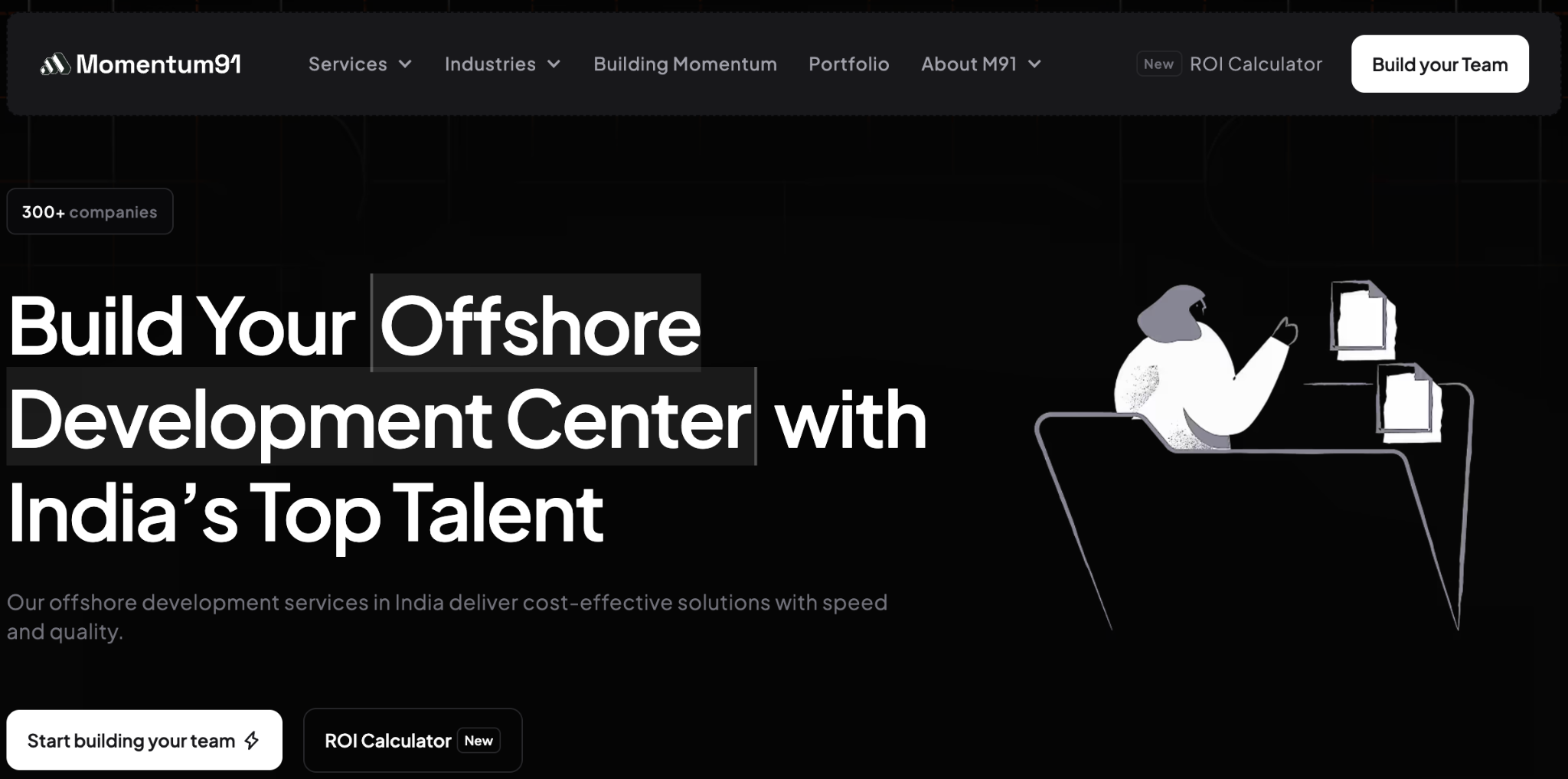
Momentum91 is an offshore software development company built to help you scale faster and smarter. If you want to use the latest offshore software development trends, we turn them into real results for your business.
With 8 years of experience, operations in 25 centers across 11 cities, and access to 13,000+ experts, we deliver full-stack teams that feel like your own.
We move fast — 95% of our offshore software development projects go live in under ten weeks. From PoC development to enterprise rollouts, we manage engineering, UX, and product growth under one roof.
Key Strengths:
- AI-First Thinking: We integrate AI where it drives measurable outcomes.
- End-to-End Development: We handle every stage of your offshore software development journey.
- Full-Stack Execution: Engineers, designers, and product strategists work together.
- Embedded Product Teams: Our teams operate as if they’re part of your in-house staff.
- Scalable Talent: Quickly build or expand teams through India’s strongest partner network.
Momentum91 helps you transform the latest offshore software trends into scalable, impactful software that launches faster and performs better.
Conclusion
Many businesses face communication gaps, missed deadlines, and security risks in offshore software development projects. These issues cause budget overruns, product delays, and frustrated stakeholders, which can damage trust and slow growth. In 2025, falling behind on offshore software development trends means losing speed and competitive advantage.
Momentum91 solves this with dedicated offshore teams, AI-driven processes, and proven delivery playbooks. We help you adopt the latest offshore software trends like cloud-native builds, DevOps automation, and secure development practices so you launch faster, stay compliant, and deliver better products consistently. Connect with Momentum91’s offshore teams now.
FAQs
1. What are the top offshore software development trends in 2025?
The leading offshore software development trends include AI-powered development teams, Zero Trust security, hybrid nearshore-offshore models, cloud-native builds, and DevOps automation. Companies also embrace latest offshore software trends like low-code platforms, blockchain solutions, and green coding practices to improve scalability, security, and delivery speed across global projects.
2. How can AI improve offshore software development projects?
AI accelerates offshore software development by generating boilerplate code, automating QA, and predicting defects early. These latest offshore software trends help reduce time-to-market by up to 50% and improve code quality for agile offshore teams, ensuring consistent results across distributed delivery centers worldwide.
3. Why is cybersecurity important for offshore software development?
Cybersecurity is central to offshore software development trends because remote teams handle sensitive data. Vendors adopt Zero Trust, ISO 27001 compliance, and continuous monitoring. These measures align with cybersecurity offshore development requirements, helping businesses protect IP, avoid breaches, and maintain regulatory compliance while working with offshore partners.
4. What are the benefits of hybrid offshore models?
Hybrid models mix nearshore collaboration with offshore development for optimal results. This latest offshore software trend enables real-time communication, 24/7 development cycles, and cost savings. Teams reduce project delays and maintain high quality while taking advantage of global talent and follow-the-sun delivery strategies.
5. How do low-code platforms impact offshore software development?
Low-code tools help offshore teams deliver prototypes quickly, validate features early, and accelerate go-to-market timelines. These offshore software development trends empower business users to automate workflows while developers focus on complex tasks. Governance ensures security and integration, preventing tool sprawl and maintaining project stability.
6. How does cloud computing support offshore software development?
Cloud-native architectures allow offshore teams to scale applications seamlessly, optimize costs, and improve uptime. Multi-cloud strategies and serverless computing, two key latest offshore software trends, give businesses flexibility and reliability while enabling faster feature deployment across regions without increasing infrastructure complexity.
The inbox update you’ll never want to skip
A quick catch-up with ideas, wins, and tips worth stealing, straight to your inbox every week.
The easiest way to reach us.
Share your details and we’ll get back within 24 hours.
Blogs
A plethora of insights,all in one place
From strategy to execution. All the big ideas, practical guides & fresh perspectives that’ll help you scale with confidence
Ebooks
Comprehensive guides that break down the shifts in business and technology, Helping you lead with clarity.

Office Hours
Your direct line to our experts. Practical advice for scaling, right when you need it.

Reports
Data-backed perspectives on where industries are headed, giving you the foresight to make bolder moves.
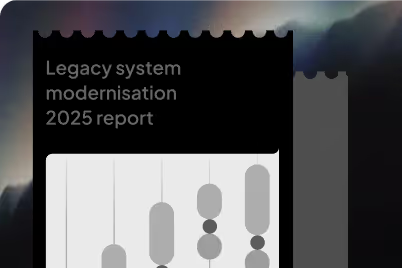
Newsletter
A quick catch-up with ideas, wins, and tips worth stealing, straight to your inbox every week.
.avif)
Podcasts
Conversations where you get to know everything from the ones who know it best.
.avif)
Your Offshore Development Center, Done Right
Access top-tier global talent, enterprise infrastructure, and complete regulatory compliance through our proven model.
Start Now




